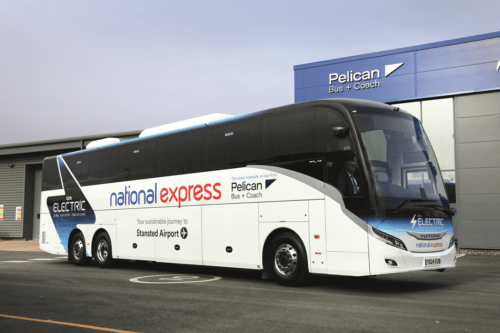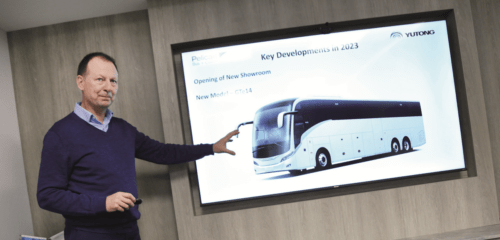
Pelican Bus & Coach unveiled its new GTe14 electric coach to invited guests at the end of February, with the surprise news that it was to go on trial with National Express. Jonathan Welch reports
Rewinding the story a little, it’s ten years ago now that Yutong entered the UK market with the support of established truck dealership Pelican, based in the conveniently central location of Castleford, near Leeds. Back then, many might have dismissed the Chinese brand as no competitor for British and European products that were familiar stock for most operators at the time, especially given another Chinese brand’s less than successful attempt to crack the UK market around the same time.
So few would likely have predicted that a decade later, we’d be announcing the 1,000th Yutong delivered in the UK, or that a significant chunk of those deliveries would be electric buses, the company having somewhat crept up to steal a good slice of the pie in that segment.
Possibly even more significantly, and possibly to the embarrassment of some home-grown manufacturers, Yutong – supported of course by strong sales totalling some 180,000 electric buses in its home market – has managed two ‘firsts’ in the UK, not only launching the first electric coach in the shape of the TCe12, but now also the first ‘full-fat’ electric coach, the GTe14.

Facts and figures
[…]By subscribing you will benefit from:
- Operator & Supplier Profiles
- Face-to-Face Interviews
- Lastest News
- Test Drives and Reviews
- Legal Updates
- Route Focus
- Industry Insider Opinions
- Passenger Perspective
- Vehicle Launches
- and much more!


